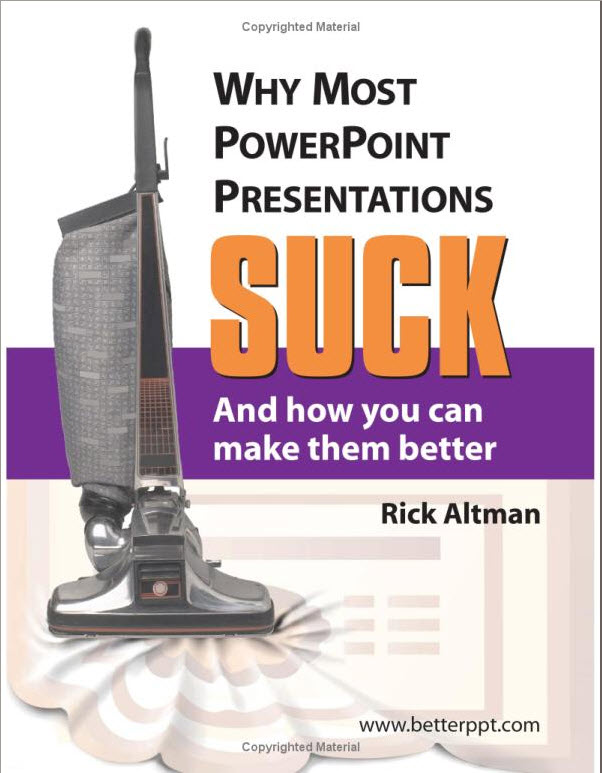I just recorded a new video PowerPoint Presentation for one of my websites. Since I intended to post this video on the website, I wanted to be sure that the total length did not exceed 4 minutes. In Internet-time, that can seem like an eternity!
I had a story to tell – promoting my services as a trainer. So I wanted to make it interesting. I want viewers to watch the entire video – it comes in at 3 1/2 minutes. And, of course, I wanted to conclude the video with a strong “call to action” – contact me to discuss my training services.
Here are the steps that I followed to create and record the PowerPoint video:
- I wrote a short story board – Opening slide, Introduce me, What I do, How I do it, etc.
- This came out to 8 slides. I then created them in PowerPoint.
- I made sure that I followed the “Four-by-Four” rule with my bullet points. Only 3 of the 8 slides contain bullet points.
- I wrote my script. This was an easy step since I had been writing my script “in my head” as I created the PowerPoint slides.
- The script come in at 570 words. I read it aloud several times and then I timed it.
- My first reading – at performance level – came in at 3 1/2 minutes. That is a speaking rate of 163 words-per-minute (wpm). A little fast – but it felt comfortable to me.
- I made a test (audio) recording and I was happy with the script. I made a few changes – where I stumbled over a word or two.
- Now it was time to record the PowerPoint presentation (video & audio together.) I added “Heading 2” styles to my script at each point where I was to advance the slide.
- I had 2 false starts. Because I had written my script and rehearsed prior to the recording, I finished the project in just 2 takes.
Give me your feedback after watching the video. What do you think? Did I speak too fast? Was my story clear? etc.
Add your comments below.
And, yes, you can contact me if you want to engage my services!
danny@thecompanyrocks.com















